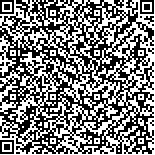叶芊,陈文莉,姚捷,等.基于镜像神经元理论的手动作观察、模仿结合复述训练对脑卒中后偏瘫并失语的影响[J].中华物理医学与康复杂志,2024,46(4):302-307
扫码阅读全文

|
| 基于镜像神经元理论的手动作观察、模仿结合复述训练对脑卒中后偏瘫并失语的影响 |
|
| |
| DOI:10.3760/cma.j.issn.0254-1424.2024.04.003 |
| 中文关键词: 镜像神经元 手动作观察 失语 脑卒中 |
| 英文关键词: Mirror neurons Hand action observation Aphasia Cerebral apoplexy |
| 基金项目:国家自然科学基金(82102681,82272612);江苏省自然科学基金(BK20210228);中国博士后科学基金第72批面上项目(2022M720722);江苏省卫生健康发展研究中心2021年度开放课题(JSHD2021028) |
|
| 摘要点击次数: 3368 |
| 全文下载次数: 3398 |
| 中文摘要: |
| 目的 观察基于镜像神经元理论的手动作观察、模仿结合复述训练对脑卒中后偏瘫并失语患者运动和语言功能的影响。 方法 采用随机数字法将符合入选和排除标准的脑卒中后偏瘫并失语患者40例分为手动作观察、模仿结合复述训练(A组)、手动作观察结合复述训练(B组)、动态风景观察结合复述训练(C组)和常规治疗组(D组),每组患者10例。4组患者均每日训练2次,每次训练30 min,每周训练5 d,连续训练4周。于训练前、训练4周后(训练后)采用Fugl-Meyer评定量表(FMA)的上肢模块和汉化版西方失语成套测验(WAB)评估4组患者的上肢运动功能和语言功能。 结果 训练后,4组患者的FMA评分、自发言语、听理解、复述、命名评分和AQ值均显著优于组内治疗前(P<0.05)。A组训练后的FMA评分为(33.00±16.53)分,均显著优于B组、C组、D组训练后,差异均有统计学意义(P<0.05);B组和D组训练后的FMA评分均显著优于C组训练后,差异均有统计学意义(P<0.05)。A组训练后的自发言语、听理解、复述、命名评分和AQ值均显著优于B组、C组、D组训练后,差异均有统计学意义(P<0.05);B组和D组训练后的自发言语、听理解、复述、命名评分和AQ值均显著优于C组训练后,差异均有统计学意义(P<0.05)。 结论 手动作观察、复述结合模仿训练可更好地改善脑卒中偏瘫并失语患者的运动和语言功能,其机制可能与该训练方法可激活更多的镜像神经元系统、促进重要的运动-语言网络重塑有关。 |
| 英文摘要: |
| Objective To observe the effect of combining imitation with hand action observation and retelling training based on mirror neuron theory on the motor and language performance of hemiplegic stroke survivors with aphasia. Methods Forty hemiplegic stroke survivors with aphasia were randomly divided into four experimental groups of ten. Group A received training using hand movement observation and imitation combined with retelling. Group B learned hand movement observation combined with retelling without the imitation component. Group C watched dynamic landscape videos combined with retelling training. Group D received only conventional treatment. All four groups trained twice a day for 30 minutes each time, 5 days a week for 4 consecutive weeks. Before and after the training, everyone′s upper limb motor function and language use were quantified using the Fugl-Meyer assessment (FMA) and the Chinese version of Western Aphasia Battery (WAB). Results After the training, all four groups′ average FMA scores, spontaneous speaking, auditory comprehension, repetition, naming and aphasia quotient (AQ) values had improved significantly. The average FMA score of Group A was the best, with the average FMA scores of groups B and D still significantly better than Group C′s average. The same relationships applied to the spontaneous speaking, auditory comprehension, repetition, naming, and AQ results. Conclusions Combining hand action observation and retelling with imitation training can better improve motor function and language use among stroke survivors with hemiplegia and aphasia. The mechanism may be that such training can activate more mirror neuron systems and promote the remodeling of the important motor language network. |
|
查看全文
查看/发表评论 下载PDF阅读器 |
| 关闭 |